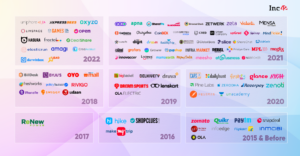As online shopping becomes buyers’ “method of choice” amid the ongoing COVID-19 pandemic, Buy Now Pay Later (BNPL) is emerging as one of the fastest growing e-commerce payment methods in India, bringing forth the future of smarter lending.
With BNPL products, customers can enjoy the convenience of paying for goods such as food, apparel, personal care items, smartphones, refrigerators, etc.; with a 15 to 30-day cushion for repayments or installments. What this means is that you have enough room to manage your bills and payments even if your salary is credited late,
This ease of utility has caused a mammoth surge in e-commerce, and consequent BNPL transactions. Set to change how credit operates in the market, BNPL is projected to capture nine percent of the total e-commerce market share by 2024, according to a report by Worldpay.
So what’s the real enabler of this growth?
BNPL’s strongest differentiator is that it requires minimal documentation. In vast contrast to traditional financing instruments like personal loans—which are typically processed after extensive documentation—BNPL runs a soft check on credit history. Its ease of access provides greater speed, convenience, and flexibility to the user, thereby increasing their spending power.
The accelerated shift to digital-first experiences past year and a changed consumer expectations for how and when they pay. A prolonged shutdown, no doubt, saw a few sectors face significant losses and layoffs, which also affected the propensity of personal consumption. But, the restrictions also led businesses and consumers to explore BNPL options as the instalments offered flexibility and convenience of payment.
Despite these offerings and adoption across a few pockets, statistics from a CIBIL report point to a significant untapped opportunity for alternative credit solutions in India – out of the 220 million credit eligible consumers in India, about 150 million do not hold any credit product today.
Trends shaping the BNPL Landscape
In the aftermath of the pandemic, when personal consumption and discretionary expenditure plummeted, affordability became a central theme, against which a host of BNPL trends are on the rise:
- Less documentation, more affordability
Deferring an item’s full cost by making the payment in installments — that too without the documentation of a loan — offers greater agility and affordability. This can help the informal workforce and budding businesses to secure hassle-free credit and funding. In fact, consumers who cannot make large payments upfront will find immense relief from traditionally lengthy lending processes, thanks to BNPL.
- Merchants and manufacturers will join banks and fintechs to drive BNPL
The coming year will witness an explosion of affordable solutions, primarily triggered by the flexibility and benefits of BNPL options launched across the consumer landscape. What’s more is that these options are triggering growth among both merchants and consumers. With such a momentous shift underway, the payments sector can expect the “next gen consumer landscape” to witness BNPL offerings from merchants, manufacturers, and marketplaces in addition to banks and fintechs.
- New-to-credit communities will lean on BNPL for greater consumerism
While consumers of all generations are using BNPL tools, millennial and Gen Z shoppers are doing so at markedly higher rates. A recent PYMNTS’ survey found that more than 26 percent of millennials and nearly 11 percent of Gen Z consumers had tapped BNPL to finance their most recent online purchases, compared to only 7.5 percent of older generations.
The youth is also a significant contributor to the ‘new-to-credit’ segment, which becomes a unique opportunity for smarter lending options such as BNPL to impact low-ticket transactions, which will consequently enable greater access to wider products, services, and resources across younger audiences.
Younger shoppers are distinct in many ways that may explain their heavier BNPL usage. Gen Z and millennials are on shakier financial footing, which can have a strong influence on the payment tools that shoppers prefer to use.
BNPL also advances the credit application process from being paperless to being “formless.” The solution marks a notable transition from bank-led, card-based instalments to “fintech-led, mobile-first offerings”. In fact, fintech ventures are becoming the front-end for banks to engage with their customers for such offerings.
Small businesses: a big opportunity for BNPL
With revenues dipping across sectors, small businesses are facing the pressure of limited working capital and cash flows with many contemplating a permanent shutdown.
Extending aid to small businesses is immediate and urgent, and access to credit is a challenge that can be solved at speed and scale. In fact, RBI data on credit exposure and gap for the Indian MSME sector shows that the addressable credit gap in the industry is pegged at $219 billion. Acknowledging this dire cue for help, the BNPL industry has expanded to include options for small businesses as well.
For merchants and issuers, the change in consumer behavior—of delaying purchases owing to the pandemic—could mean a huge set of potential credit customers in the near term. Alternative platforms with innovative lending models are already helping retail customers and business owners avail credit, thus adding them to the formal system. This will consequently offer banks a view into the credit history of these new customers and encourage them to offer new products and services, thereby tapping into a new customer base.
How Visa is solving for challenges in scaling BNPL
As is the case with all new opportunities, implementation of BNPL solutions also comes with its share of challenges. Despite its many benefits across the consumer landscape, BNPL addresses challenges around settlements and acceptance.
Currently, there are multiple players powering the flows of the ecosystem – broadly the aggregators drive merchant acceptance and manage user experience (UX), whereas enablers offer real-time connectivity between lenders and aggregators. While these flows exist, there is a significant opportunity for Visa, the leader in digital payments, to solve for scale, governance and efficiency of installment transactions. Current processes lack a consistent reconciliation and settlement methodology, while having no standard dispute resolution process.
Visa is partnering with BNPL players, banks, and other lenders by leveraging the company’s network capabilities to deliver –
- Wide scale acceptance across online and offline merchants
- Standardised experience and governance framework
- And lastly, all of Visa’s solutions are agnostic to channels and form factors used by the customer – be it the card or the mobile
Visa’s solution helps streamline the current process of offering an instalment/deferred payment option, with the following benefits:
- Acceptance across channels and form factors – Visa’s solutions for traditional and non-traditional lenders enables omnichannel acceptance across card-based and card-less installment flows.
- Light implementation for issuers – This solution is API driven with no changes required at the issuers’ switch, thus reducing the time to market.
- Single integration – It takes away the need to build direct integrations for transaction settlement with individual issuers
- Standardized and automated processing and settlement – Since Visa offers settlement of funds via member banks, it does not require setting up a separate reconciliation and settlement process for banks or merchants.
- Standardized dispute management – With network-based settlement, the network controls, and the refund/chargeback framework is applicable.
- Scalable model – Since this is driven on Visa’s network, a sizable chunk of long tail banks can participate on this solution vs. the current model of it being restricted to only a few large banks.
Harnessing the BNPL opportunity with Visa Fintech Initiative
Given the potential of BNPL and other fintech products to drive impact and foster innovation, Visa launched the Visa Fintech Initiative for startups and fintech ventures in India on June 24, 2021. With the sector garnering a lot of interest from entrepreneurs, venture capitalists and government entities, the programme aims to help enhance product propositions and develop better user experiences.
“Buy Now Pay Later (BNPL) is no longer just a buzzword for the Indian payments landscape. Visa is partnering with fintechs, banks, and other lenders to deliver scalable BNPL solutions across online and offline merchants. This is key to our belief in driving network-, channel-, and form factor-agnostic instalment offerings. The Visa Fintech Initiative will help start-ups understand the potential of solutions tailored on affordability and benefit from Visa’s standardized experience and governance framework. Be it cards or mobile phones, the solutions we build with our strong network capabilities help players expand their reach beyond metros and Tier I cities,” shares Arvind Ronta, Head of Products, India & South Asia, Visa.










